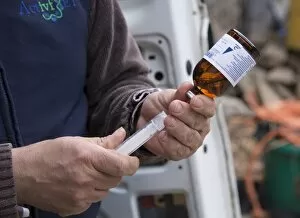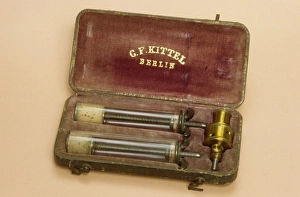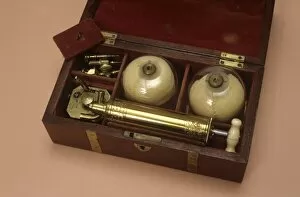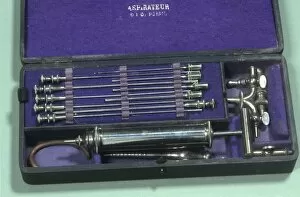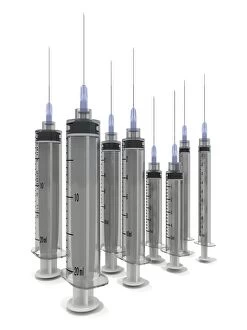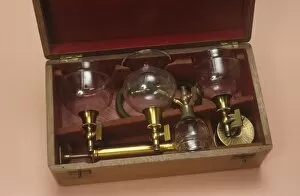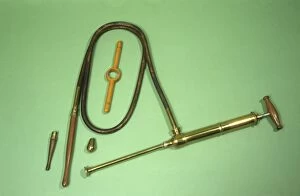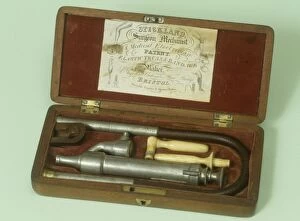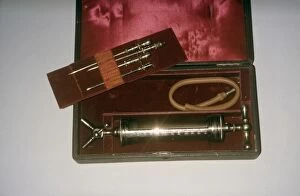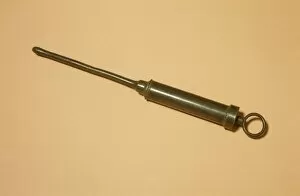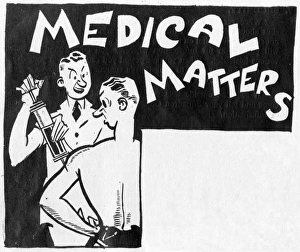Syringes Collection
In the depths of a mahogany medical chest, lies a piece of history that has revolutionized healthcare - the syringe
All Professionally Made to Order for Quick Shipping
In the depths of a mahogany medical chest, lies a piece of history that has revolutionized healthcare - the syringe. This litho page from the Army and Navy Stores Catalogue, dating back to 1939-40, showcases an array of these indispensable tools. As we delve into its pages, we witness the diverse applications of this remarkable invention. A fluid being injected into a delicate daisy demonstrates its precision and accuracy. In Preston, Lancashire, England, sheep farmers utilize syringes to save precious lives; tubing lambs unable to suck or injecting glucose solutions into comatose lambs. The importance of vaccinations is evident as Swaledale sheep in Cumbria are protected against Enzootic Abortion through automatic syringe injections. The meticulous process involves mixing live vaccines before administering them with care. Not limited to sheep farming alone, cattle farmers also rely on syringes during embryo transfer procedures. With steady hands and bottles filled with anaesthetic for epidural use, they ensure successful transfers while prioritizing animal welfare. Even beyond farms and fields, the impact extends far and wide. In awe-inspiring circus acts where danger lurks at every turn, veterinarians armed with these instruments bravely attend to majestic tigers' health needs. From historical catalogues to life-saving moments captured in photographs - it becomes clear that they have become an essential part of our medical arsenal throughout time. These humble devices continue their silent but significant role in safeguarding lives across various domains - forever etching their mark on human progress and animal well-being alike.



